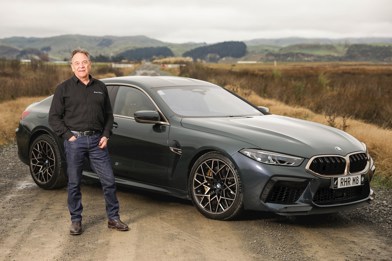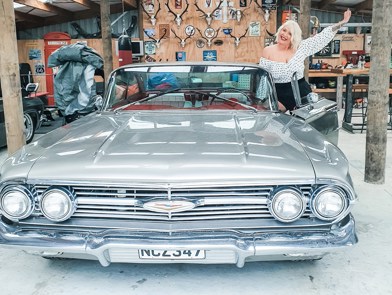For those outside of the automotive industry, the government’s proposed Clean Car Standard might not mean much, but for those on the inside, it’s a rather large deal. Attempting to explain the standard within 100 words or less is almost impossible, so I’m not going to attempt it. As a consumer, all you really need to know is that brands have to drastically cut emissions from new car fleets by 2025, or face steep penalties.
With this in mind, it should make sense that Toyota New Zealand is very excited about the all-new Highlander SUV, and its newfound hybrid power. To please the V6 fans, the classic 3.5-litre model is also going to be included in the local line-up, but it’s clear that it isn’t the priority.
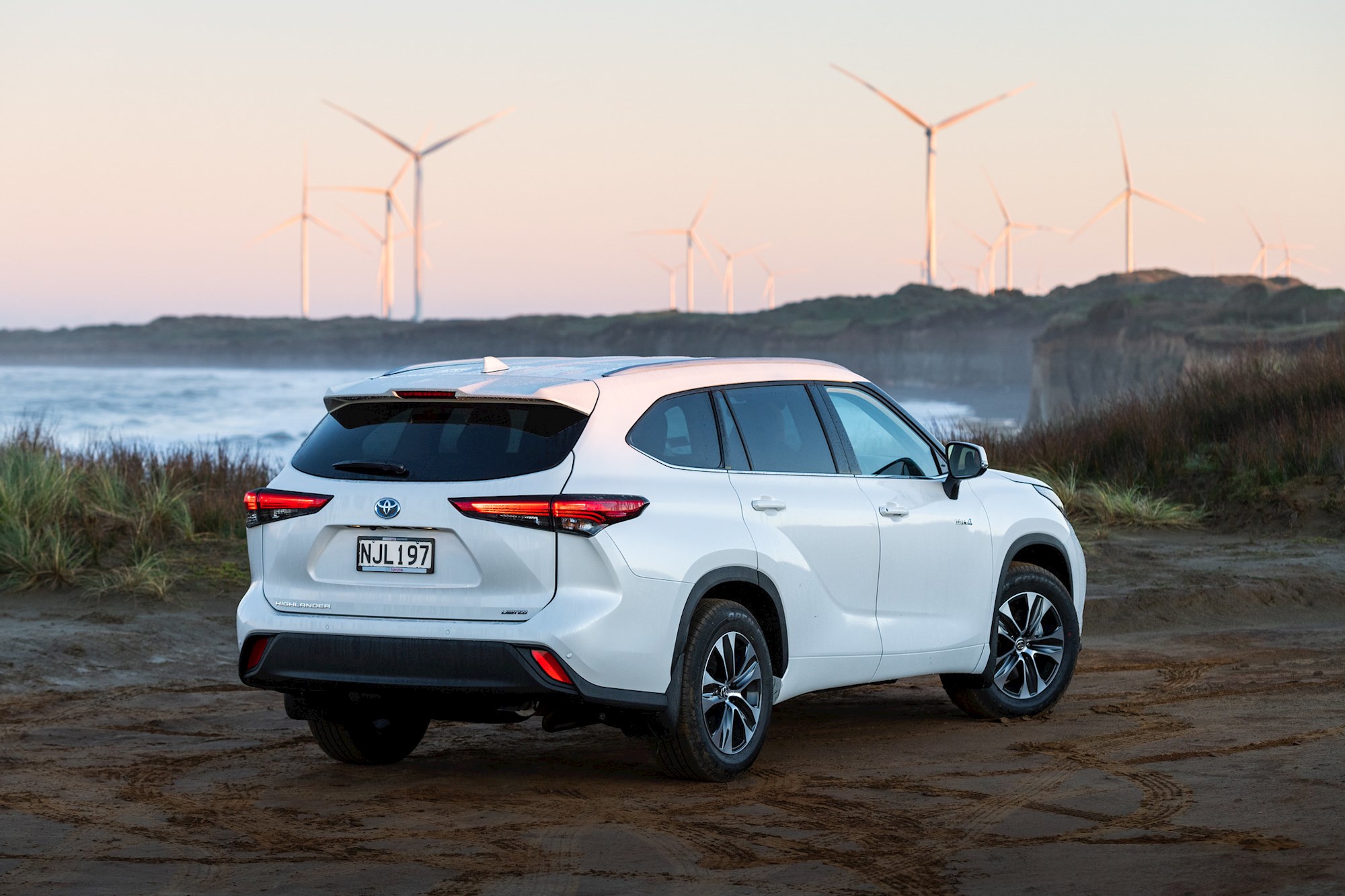
So far, Toyota New Zealand has taken more than 700 orders for this new Highlander, with around 85 per cent of these customers opting for the hybrid.
The hybrid in question features a similar powertrain to the RAV4 hybrid that has proven to be incredibly popular. It’s a 2.5-litre four-cylinder engine that’s paired with an electric motor on the rear axle to provide a total output of 184kW and 242Nm. A CVT transmission sends the engine’s power to the front wheels, while the electric motor handles power at the rear and makes up the all-wheel drive system. Toyota claims that this unit is good for a combined fuel consumption figure of 5.6L/100km.
In the other corner is the 3.5-litre V6 petrol option, an engine that Highlander owners will be very familiar with. For this generation, it makes 218kW and 350Nm, and power is sent to all four wheels through an eight-speed automatic transmission. As you would expect, fuel use is a little higher here, with Toyota’s combined figure sitting at 8.8L/100km.
While it is yet to get its official ANCAP safety rating, this new Highlander gets the full Toyota Safety Sense suite, which includes a pre-collision system, lane tracing assist, and adaptive cruise control with curve speed reduction as standard. With this in mind, and alongside the rest of Toyota's modern standards, we'd be extremely surprised to see this SUV not achieve a five-star rating.
In total, five models are available in the Highlander line-up; two petrol and three hybrid options, ranging from GXL to Limited ZR trim levels. Pricing starts at $60,990 for a GXL V6, $63,990 for a GXL Hybrid, and goes through to $74,990 for a range-topping Limited ZR Hybrid. As you’d expect, more accessories are added the higher you climb up this price list, with the Limited ZR Hybrid being the only way to unlock the enormous panoramic glass sunroof and premium JBL sound system.
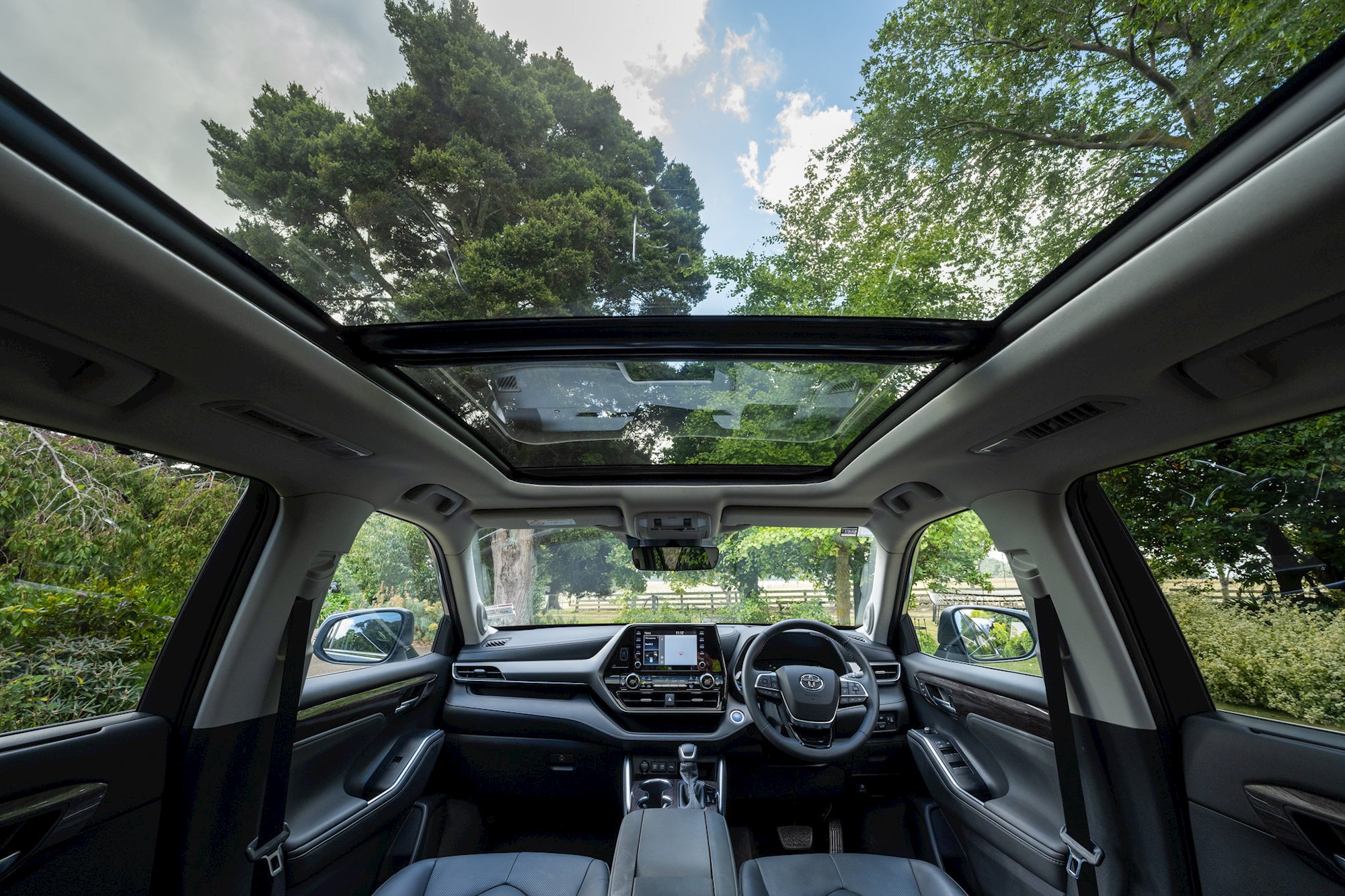
Just recently, Toyota New Zealand held the launch of this new Highlander, and we were able to sample the seven-seat SUV in almost every scenario you’d expect to see one. The route saw us depart from Emirates Team New Zealand’s headquarters in Wynyard Quarter, and head west through Auckland city before going north. Here, the electric engine in the hybrid proved its worth with the engine not needing to provide any assistance during low-speed traffic. As the road opened up in a less built-up area, the engine fired into life, and the fuel consumption picked up. Despite this, it wasn’t until we hit the open road that we saw the average consumption hit the 5L/100km region, where Toyota has claimed it will sit.
The first drive day saw DRIVEN sample both the hybrid and V6 Highlander models, with each having its own expected advantages and disadvantages. From the outset, it’s obvious that the 3.5-litre V6 provides more grunt than the four-cylinder, and feels like a faster SUV. It’s noisier than its smaller counterpart when winding through the rev range, but provides a more linear torque curve in partnership with its traditional eight-speed automatic transmission. Speaking of transmissions, the e-CVT in the hybrid is a pleasure to use, and the electric motor on the rear axle negates the rubber band feeling that CVTs are known for.
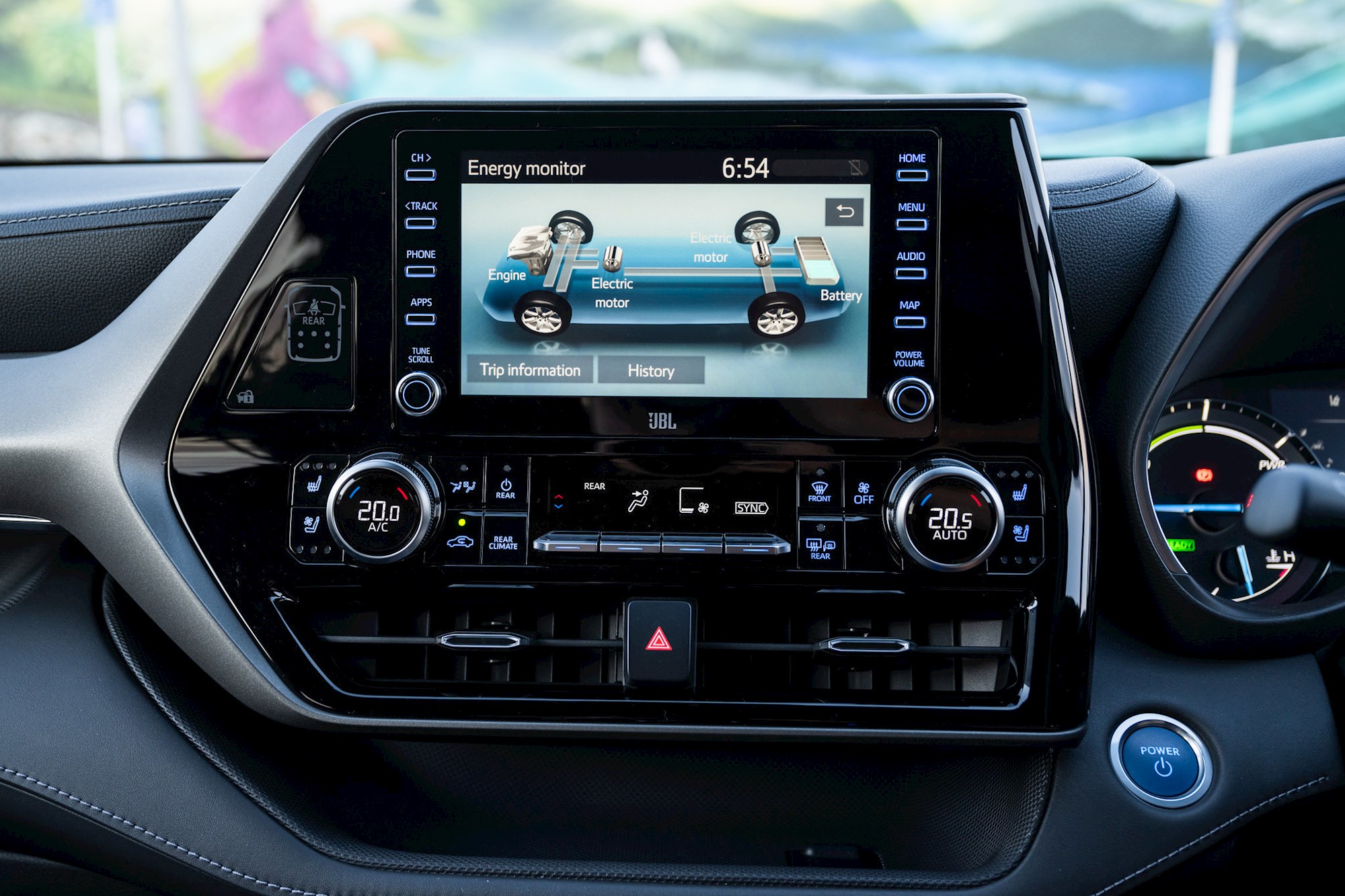
Another difference between the two variants that was brought to my attention on the roads of questionable quality throughout Northland is the ride quality. I found the hybrid to be quite soft in comparison to the V6, and I noticed a little more body roll in the corners. In saying this, both vehicles offer a smooth, composed ride, but the V6 is a little more direct.
As a whole, it’s no secret that Toyota New Zealand is favouring the hybrid over the V6, and it seems like a win-win scenario for everyone. Customers are opting for electric power to keep prices down at the pump, and Toyota avoids Clean Car Standard penalties.










